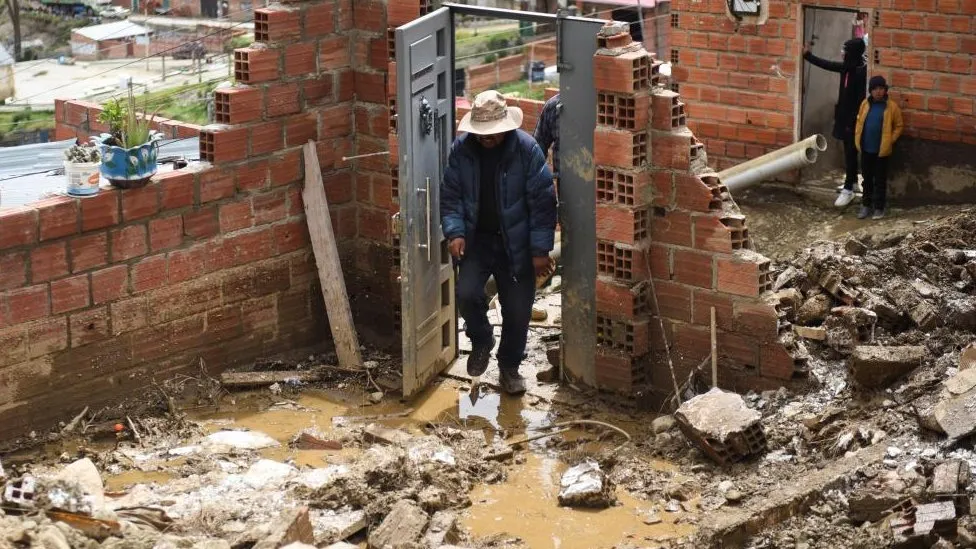Many towns and villages in Bolivia are being warned about heavy rains that are causing a lot of damage.
Authorities say that 33 people have died because of the rain since November. The rain has caused landslides and made rivers overflow.
The number of people who have died is eight times more than this time last year.
Officials are watching a few dams closely because they are worried they might flood.
Juan Carlos Calvimontes, who is in charge of Civil Defence, said that in Bolivia, 10 out of 340 towns are on the highest alert and 279 are on the second highest alert.
Authorities also mentioned that they sent help to Achocalla, in La Paz province. A 35-year-old woman and her two children were buried in a mudslide that covered their home.
A neighbor told the local newspaper that she yelled at the woman to leave the house, but the mother might not have been able to take her children with her in time.
More than 20 people got hurt.
In La Paz province, officials are watching the water levels in the Incachaca dam very carefully.
Government experts and the mayor of La Paz city went to see the dam on Sunday. La Paz is the city below the dam.
Mayor Iván Arias said the reservoir is full of water, but it is draining properly and shouldn’t cause any big problems downstream.
Three additional water storage areas – Hampaturi Alto, Pampalarama and Alpaquita – are also full.
Bolivia is getting heavy rain after a very long time of not much rain and one of its hottest winters ever.
In October, many people came to the Incachaca reservoir to pray for rain because it was nearly full.
The doors that release water at the Incachaca reservoir.
Bolivia often has extreme weather, like heavy rain. But now, climate change has made it more likely to have even heavier rain.
The world has gotten 1. 1 degrees Celsius warmer since the industrial era started, and temperatures will continue to rise unless governments make big reductions in emissions.
Date:

